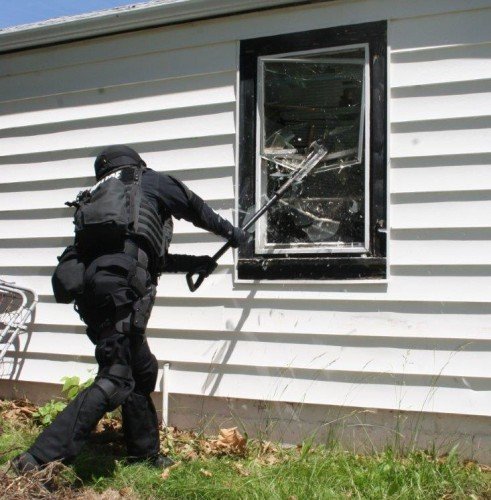
It was almost 10 years ago that I started my SWAT experience, and since then I’ve added dozens of new terms and sayings to my vocabulary. Perhaps one of the most enduring, and broadly applicable, is the saying, “Two is one and one is none”.
The Boy Scout motto is “Be Prepared”, and that is the basic premise to this saying. Specifically, the premise is that you need a back-up to all your critical gear. With a back-up, you have the assurance that in a time of need, you have the ability to carry on the mission without interruptions or without exposing yourself to unnecessary dangers. Without that back-up, you might as well not even consider that you’re prepared, because more than likely “Murphy” will visit you and your primary equipment will fail.
What I hope to accomplish with this article is to spur conversation about what critical duty gear you think falls within this mindset. Here are a few of my ideas.
Handguns
Richard and the whole Bluesheepdog crew have repeatedly advocated that officers carry back-up handguns. On a recent post, a Florida officer had her primary handgun disabled by shots from a perpetrator, and she sustained multiple gunshot wounds providing a clear and powerful reminder of this need. I’m sure we’ve all had that uncomfortable feeling of a misfire or mechanical failure of our duty pistol while range firing. The point is – officers need two handguns on duty!
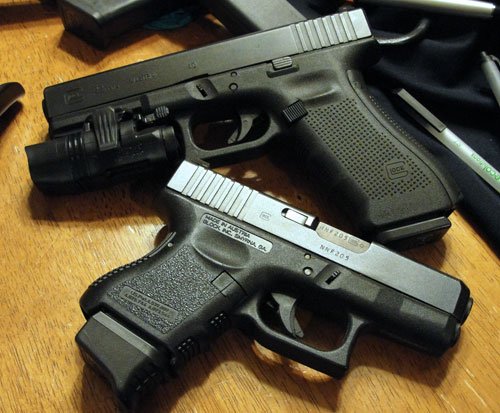
Without going into the arguments over what kind of back-up gun should be carried, officers should really assess their readiness level if they are going into the field with only one firearm. They should probably be assessing their mindset as well.
An important consideration, however, is to at least have a back-up firearm that shoots the same type of ammunition as your primary pistol. If you have a catastrophic failure of your primary handgun, you can at least resupply your back-up weapon. There are many great small frame revolvers, but 5 or 6 shots won’t last long. A best-case scenario, in my opinion, is to have a “mini” version of your primary gun. Glocks, and some other manufacturer’s compact versions, allow for the full-size magazines to be inserted into the smaller handguns. That’s a huge advantage in a firefight!
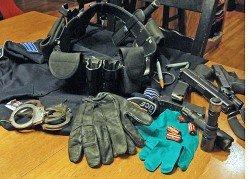
I’ll admit that for the first 2 years of my police career I did not carry a back-up pistol. Most of that was due to the cost, and not having a really good compact handgun compatible with the big Smith & Wesson .45 that we carried then. When we changed to the Glock 22, I quickly purchased a Glock 23 purchased a Glock 23 as a back-up and off-duty carry gun. I chose the 23 because it had a better grip feel than the 27. I didn’t like the small grip on the Glock 27, and the Glock magazine extender didn’t completely help.
However, after a few years, I realized that the Glock 23 was a little too big and heavy for a back-up handgun. At the time I was wearing an Uncle Mike’s shoulder rig under my uniform shirt because I hadn’t found a good ballistic vest holster for the 23. That was way too bulky, and definitely not comfortable by the end of my shift.
Now I carry a Glock 27 every day on duty. I have a ballistic vest holster and a Scherer magazine extender to help with a more secure grip and give me one more round in the magazine. Our policy only allows us to carry back-up handguns above the waist, so I’m limited on how and what I can carry. The extended magazine makes the 27 a little bulkier, but it actually makes retrieving the 27 a lot easier through the zippered front of my duty shirt.
Officers are often unaware that a deadly force encounter is about to be presented (car stops, service calls, ambushes, etc.), so having two guns in the fight is a lot more comforting than simply relying on one. With the number of officers being killed with their own firearms still disturbingly high and the number of officers being disarmed in confrontations, this is another absolute reason to carry a back-up.
Long Guns
In some situations, officers are aware of the potential for a lethal force encounter, yet I’ve often seen them fail to resort to their best friend they could have at that time – the long gun. Whether it’s a robbery call, shots fired call, or a building search on an alarm call, officers should grab their long gun as their primary firearm. I’ve written before on the accessories necessary to properly equip patrol rifles or shotguns (such as a sling, and mounted light), but even without these items, an officer can bring a lot more firepower to bear by having the shotgun or rifle with them. Transition drills can be honed for long guns with or without a sling.
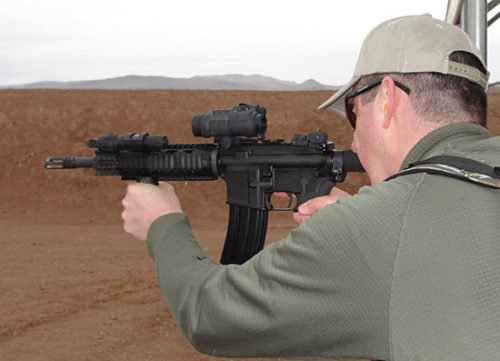
Police departments and officers can learn a lot from the military training philosophy that a handgun is nothing but a last-resort defensive weapon. I’ve had the advantage of training with a former Navy SEAL, a former Army Ranger, and a Marine Security Forces member. For close quarters battle, they all advocated using the long gun first and only transitioning to the pistol to clear the immediate threat when the long gun went down. As soon as practical the operator should call for cover to get the long gun back up as the primary weapon. In longer range engagements soldiers are taught to call for cover from teammates and get the long gun up and running without going to the shorter range pistol.
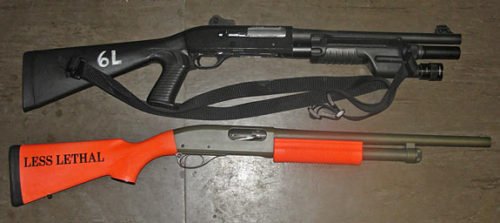
Most police agencies equip their patrol cars with shotguns. Some agencies have patrol rifles or a combination of both. With this addition, officers have a far greater tool for engaging adversaries accurately from distance and cover.
Although I’m not saying that officers need to wield two long guns at one time, like some kind of old West bandito, I mention the long gun in the overall concept of having more than one firearm in the fight.
Ammunition
This might seem unnecessary, but I add it to make a good point. I have not seen one major police department that does not have their officers carrying extra magazines of ammunition. The most common is the double magazine pouch on the duty belt. That means officers are carrying three magazines into the field (one in the pistol and two back-ups). Again, we see the concept that “2 (or more) is 1 and 1 is none”. It is definitely better to have than to have not.
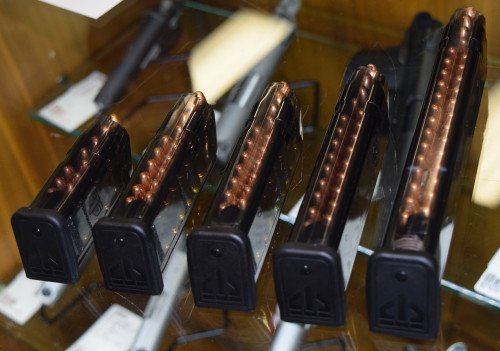
How many of you carry even more magazines? I carry a loaded pistol and two extra magazines on my duty rig. I don’t have more on my person, but I carry a Go-Bag in my patrol cruiser that has three extra loaded magazines, and boxes of extra pistol, shotgun, and rifle ammunition. In a crunch, I can grab the bag and have it with me for critical reloads or to give my partners extra ammo.
Ed. note: We’ve purchased from many different companies selling law enforcement and firearms gear online. One of the best places we’ve found for magazines is GunMagWarehouse. The company consistently ships quickly and has very good pricing on handgun and rifle mags.
Flashlights
Although firearms and ammunition are probably more critical when that lethal encounter presents itself, flashlights are going to be used far more often. And there is never a good time to be in the dark without a light ready. Flashlights can “go bad” in a variety of ways. Batteries can die, bulbs can burn out, they can be dropped and roll out of view or reach. Flashlights are definitely on my list of “2 is 1 and 1 is none”, and I feel strongly that every officer should carry more than one.
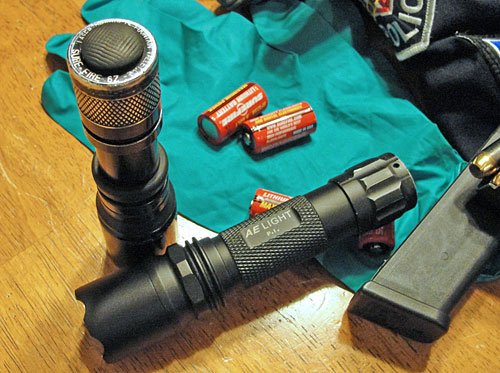
Currently, I carry a Surefire Z6 and an AE Light 200 Lumen Tactical flashlight on my duty rig. I have also carried a Blackhawk Falcata as a back-up or in my Go-Bag. (Ed. note: The Z6 is no longer available. We recommend the SureFire G2X Tactical as an excellent alternative.)
However, I also still carry my big Streamlight SL-20XP rechargeable duty light. (Ed. note – I also like the full-size Streamlight flashlight. Check out the video on the new SL-20L version.) This is basically a lighter weight replacement for the metallic MagLite flashlights. I love my compact tactical flashlights, but I still see uses for the Streamlight patrol light, especially on car stops and open field searches.
So at any given time, I might have three to four different flashlights at hand. I might sound ridiculous, but I’ve had one light go down, another officer need a light, and then I’m down to my last light.
We are lucky enough to use the Blauer Street Gear pants that have cargo pockets on the side. I stuff those things with gloves and extra CR123 batteries for my tactical lights. That has come in handy on more than one occasion – for myself and other officers.
Handcuffs
It doesn’t matter if you work a major metropolitan area or a rural jurisdiction, every officer in the field needs to have more than one set of handcuffs. There are just too many times that multiple arrests or detentions are going to occur at the same time, and not having more than one set of handcuffs is about as smart as a construction guy with a bag full of hammers!
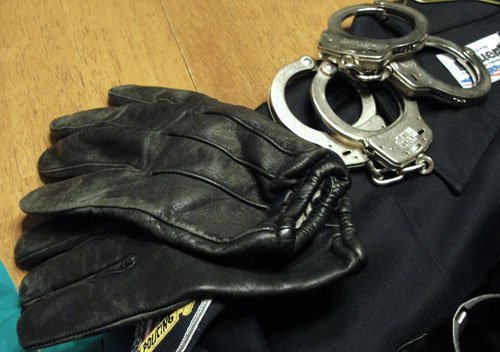
Here again, I carry two sets of handcuffs on my duty rig. One is up front and ready for easy access. The second set is next to my baton holder on the back side. I have a size 34 waist so my rig is almost completely full, but I’ve needed those second set of handcuffs way too often. My article “There I was minding my own business” was a classic example of needing two sets of handcuffs, as I had to secure two people before my back-up was able to arrive.
I have a third set of handcuffs in my Go-Bag and a fourth in my duty bag inside my patrol cruiser. If you’re wondering – yes, I’ve had all four sets in use at the same time before. Not very often, but when the bars or big parties get out of control, I like to make sure we are able to secure the drunks quickly.
Gloves
There are different gloves for different purposes, so I say each officer needs to have a couple of pairs to fit the most common needs. First and foremost is a good pair of search gloves. These should be Kevlar lined to protect officers from needles, knives, or other sharp objects.
We’ve previously reviewed the Ares Cut Resistant Gloves for law enforcement activities. These are thick but offer excellent protection.
Not known for their close fit, search gloves usually are not the best choice for shooting gloves. So a good pair of shooting gloves comes into play in cold, hot or wet weather. When it’s cold your skin needs at least some protection. When it’s hot and your heart is beating rapidly (lethal force situation) the hands get sweaty. The last thing an officer needs is to lose grip on his sidearm during times like that. The same goes for the rain. Not an absolute necessity, but a great addition to any road officer’s gear.
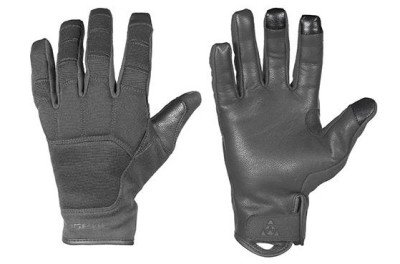
Finally, all officers in the field should have latex gloves available for them. The threat of blood-borne pathogens is too risky, and let’s face it, we don’t usually handle the cleanest people in society. Evidence processing is another great time to protect from cross-contamination and to keep that pesky fingerprint dust off our hands.
With these recommendations, officers should have at least three pairs of gloves in close proximity during patrol or tactical duties, and resupply of latex gloves in the car.
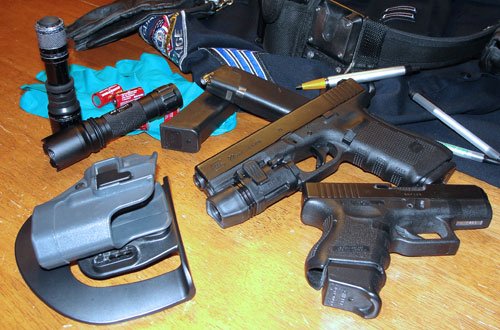
Pens
O.K. so this one isn’t a critical piece of safety equipment, like guns and ammo, but realistically an officer uses a pen every day.
You look pretty stupid if you’re taking notes for a report, and your pen stops writing without a back-up ready to go. And how many times have you given a pen to a witness or victim to write a statement, only to never to see it again? I have two “throw away” black pens that are visible in my shirt pen pocket, and I have my personal writing pen stashed under the flap of another shirt pocket. I have a bunch of “throw aways” tucked into my gear bag as well.
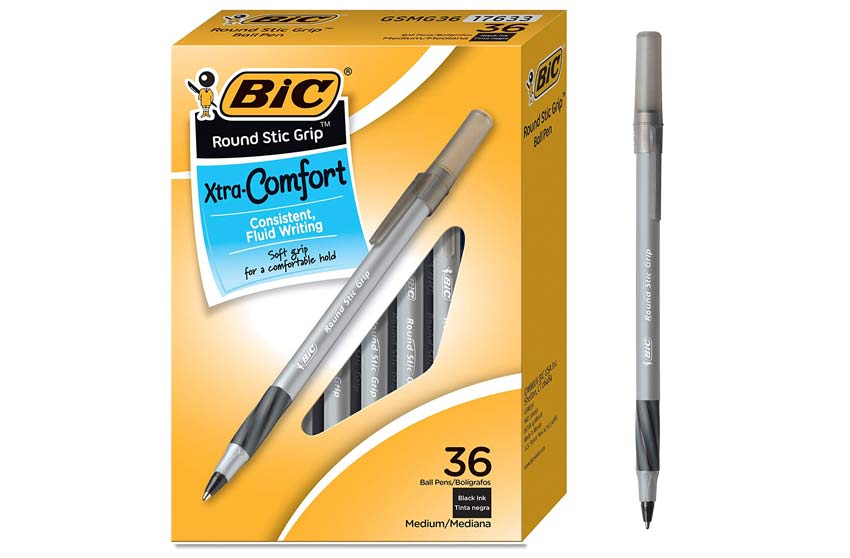
Don’t get me started about the sticky finger cops that hang around my desk. I have a large cup of “throw aways” as bait, to keep them from my good pens!
I’ve found the Bic Xtra-Comfort ballpoint pens offer good service at a ridiculously inexpensive price. I get these on Amazon for less than $5 for a box of 36. Oh – and free shipping for Prime members also.
Additional Considerations
The list above provides a good starting point for the most critical gear that requires back-ups. Hopefully, you have extra uniforms and underwear back at the station. Some other considerations for doubling up are:
- Eye protection – shaded and clear lenses (for interior work)
- Boots – wet or muddy boots will end your day quick
- Socks – wet socks and bare feet = blisters
- Hand sanitizer – it runs out way too quickly
What are your “Two is one and one is none” must have items?
Aaron is a sergeant with a midwestern police department, where he serves as a trainer, supervisor and SWAT sniper. In addition to his broad tactical knowledge, Aaron has experience in DUI, DRE and undercover narcotics investigations.